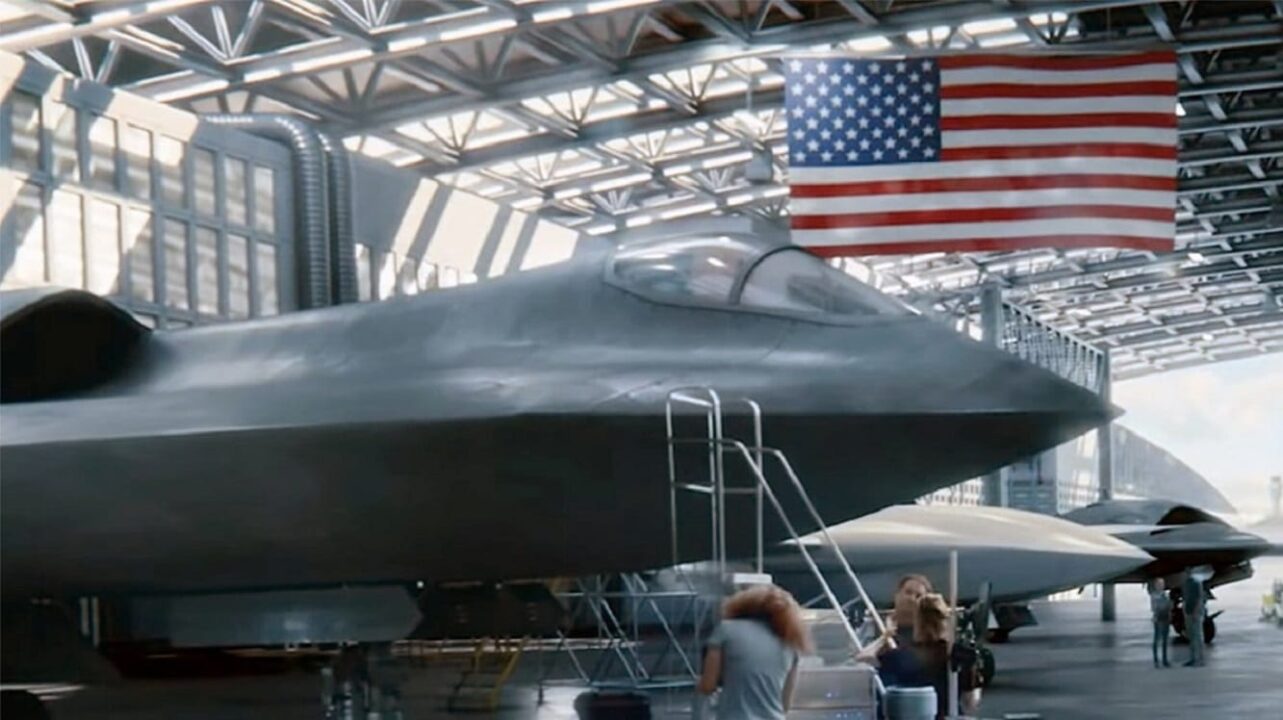NGAD Is Coming: Months back, the United States Air Force officially unveiled the Northrop Grumman B-21 Raider at the aerospace firm’s Palmdale, California, facilities. The long-range strategic bomber, which is the spiritual successor to the service’s fleet of B-2 Spirits, was described as the first “sixth-generation” combat aircraft. It is on track to enter service by the end of the decade when it will replace the aging B-1B Lancer and serve alongside the B-2 Spirit and B-52 Stratofortress until it eventually becomes America’s sole bomber.
It won’t be the only advanced sixth-generation U.S. Air Force warbird in service in the coming decades, as the service is also forging ahead with its Next Generation Air Dominance (NGAD) program, just one of the multiple efforts to develop the fighter of the future.
More Money For the NGAD
Few details have been shared publicly about the NGAD, but this month it was reported that the Air Force’s Next Generation Adaptive Propulsion (NGAP) program has received $220 million – a nearly $153 million increase over the budget request – in the fiscal year 2023 (FY23) omnibus appropriations bill.
It was in August of last year that the Air Force awarded contracts worth a total value of $4.9 billion to five companies – General Electric, Raytheon Technologies’ Pratt & Whitney, Boeing, Lockheed Martin, and Northrop Grumman – to develop prototypes of an adaptive engine for the next-generation fighter jet.
Each of the awards, worth up to $975 million, was for design, analysis, rig testing, prototype engine testing, and weapon system integration. The work is to be completed by July 2032.
“The contract is for the execution of the prototype phase of the Next Generation Adaptive Propulsion program and is focused on delivering capability enabling propulsion systems for future air dominance platforms and digitally transforming the propulsion industrial base,” the award notice stated.
At the time, it was first reported by Defense News that the awards marked a broadening of the adaptive engine market, which until now was dominated by GE Aviation and Raytheon Technologies-owned Pratt & Whitney. Those companies were developing engines under the Adaptive Engine Transition Program (AETP), which the Air Force pursued as a way to produce a new replacement engine for the F-35 Joint Strike Fighter.
Pricey Program
The NGAD is also more than a single aircraft. Described as a “family of systems,” the goal of NGAD, which originated from a DARPA (Defense Advanced Research Projects Agency) Air Dominance Initiative study in 2014, is to field a new sixth-generation fighter aircraft in the 2030s to replace the Lockheed Martin F-22 Raptor.
NGAD will actually include a number of manned and unmanned systems. A variety of multi-mission drones, which have been dubbed Collaborative Combat Aircraft (CCA), could act as the loyal wingmen for the manned NGAD fighter.
Development of the primary aircraft is reportedly underway.
“We are working on the actual design of the aircraft … so that means we are in the engineering, manufacturing development phase,’ Air Force Secretary Frank Kendall, the service’s top civilian official, told reporters at the Air and Space Force Association’s annual conference in National Harbor, Maryland on Sept. 19, 2022.
Kendall added that the current goal is to start production of the aircraft “by the end of the decade.”
As previously reported, the Air Force has estimated that the NGAD program could cost $11.7 billion from 2024 to 2027. It would be one of the most expensive Air Force programs to date.
MORE: Why Putin Fears the M1 Abrams Tank
MORE: I Went to War in the Leopard 2 Tank Ukraine Wants
Author Experience and Expertise: A Senior Editor for 19FortyFive, Peter Suciu is a Michigan-based writer. He has contributed to more than four dozen magazines, newspapers, and websites with over 3,200 published pieces over a twenty-year career in journalism. He regularly writes about military hardware, firearms history, cybersecurity, politics, and international affairs. Peter is also a Contributing Writer for Forbes and Clearance Jobs. You can follow him on Twitter: @PeterSuciu.

